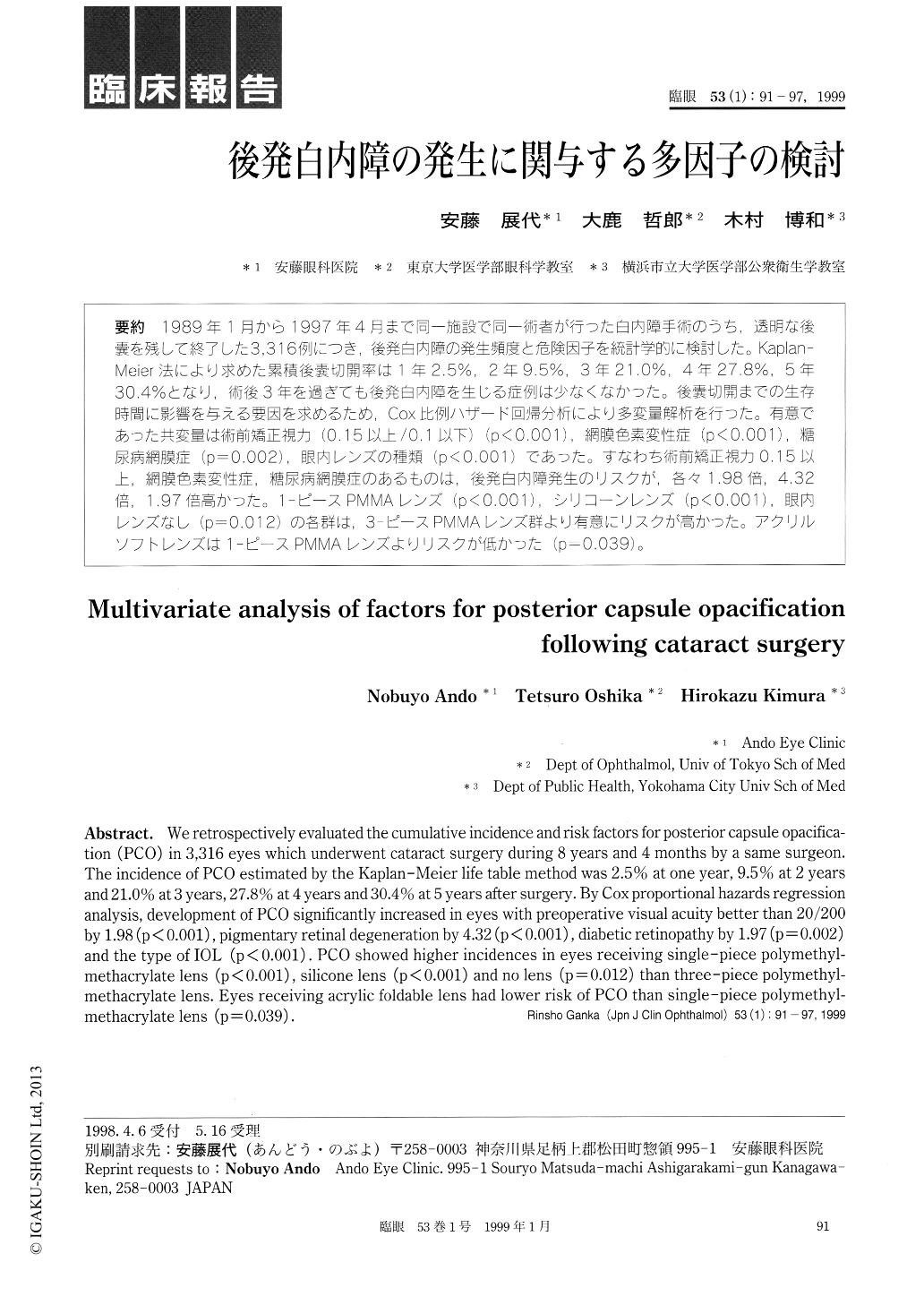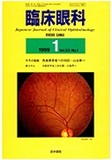Japanese
English
- 有料閲覧
- Abstract 文献概要
- 1ページ目 Look Inside
1989年1月から1997年4月まで同一施設で同一術者が行った白内障手術のうち,透明な後嚢を残して終了した3,316例につき,後発白内障の発生頻度と危険因子を統計学的に検討した。Kaplan-Meier法により求めた累積後嚢切開率は1年2.5%,2年9.5%,3年21.0%,4年27.8%,5年30.4%となり,術後3年を過ぎても後発白内障を生じる症例は少なくなかった。後嚢切開までの生存時問に影響を与える要因を求めるため,CO×比例ハザード回帰分析により多変量解析を行った。有意であった共変量は術前矯正視力(0.15以上/0.1以下)(p<0.001),網膜色素変性症(p<0.001),糖尿病網膜症(p=0.002),眼内レンズの種類(p<0.001)であった。すなわち術前矯正視力0.15以上,網膜色素変性症,糖尿病網膜症のあるものは,後発白内障発生のリスクが,各々1.98倍,4.32倍,1.97倍高かった。1-ピースPMMAレンズ(p<0.001),シリコーンレンズ(p<0.001),眼内レンズなし(p=0.012)の各群は,3-ピースPMMAレンズ群より有意にリスクが高かった。アクリルソフトレンズは1-ピースPMMAレンズよりリスクが低かった(p=0.039)。
We retrospectively evaluated the cumulative incidence and risk factors for posterior capsule opacifica-tion (PCO) in 3,316 eyes which underwent cataract surgery during 8 years and 4 months by a same surgeon. The incidence of PCO estimated by the Kaplan-Meier life table method was 2.5% at one year, 9.5% at 2 years and 21.0% at 3 years, 27.8% at 4 years and 30.4% at 5 years after surgery. By Cox proportional hazards regression analysis, development of PCO significantly increased in eyes with preoperative visual acuity better than 20/200 by 1.98 (p < 0.001), pigmentary retinal degeneration by 4.32 (p < 0.001) , diabetic retinopathy by 1.97 (p = 0.002) and the type of IOL (p < 0.001) . PCO showed higher incidences in eyes receiving single-piece polymethyl-methacrylate lens (p < 0.001) , silicone lens (p < 0.001) and no lens (p = 0.012) than three-piece polymethyl-methacrylate lens. Eyes receiving acrylic foldable lens had lower risk of PCO than single-piece polymethyl-methacrylate lens (p =0.039) .

Copyright © 1999, Igaku-Shoin Ltd. All rights reserved.


